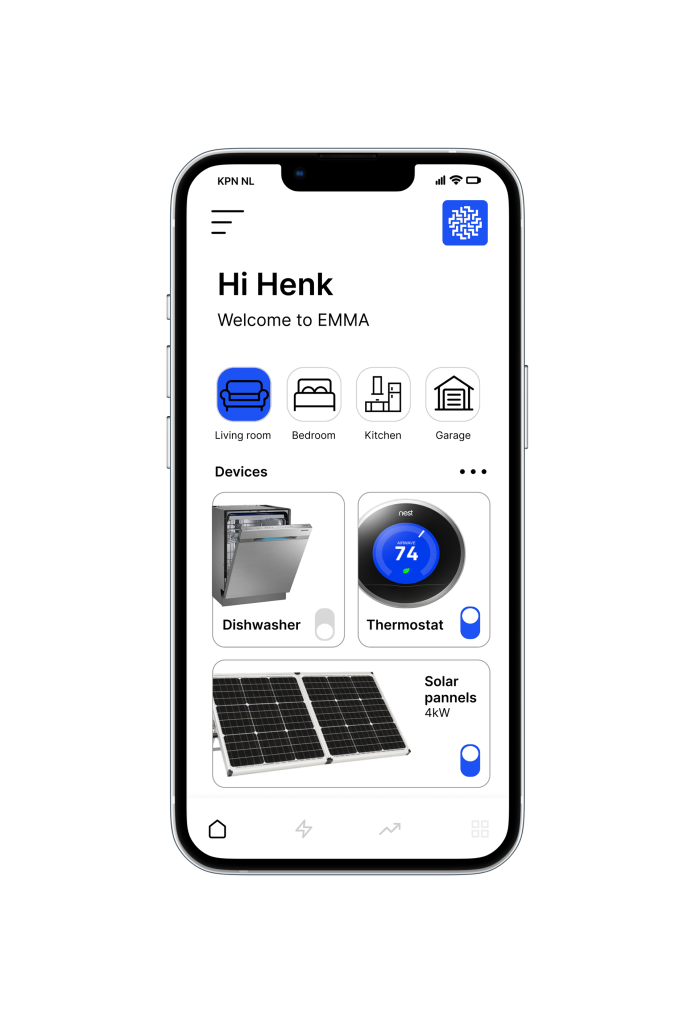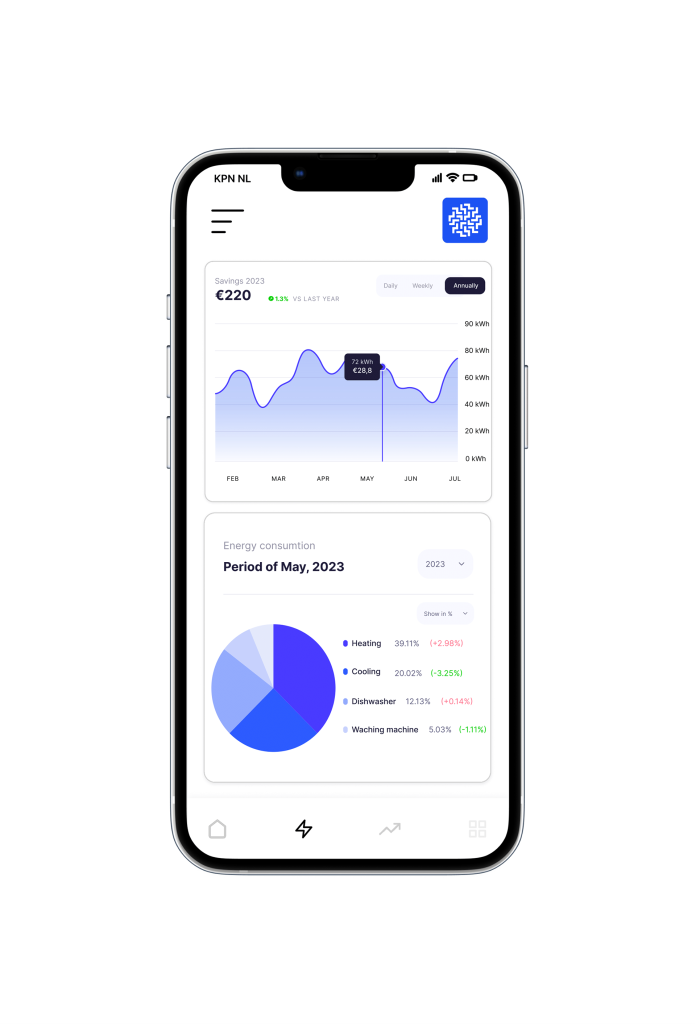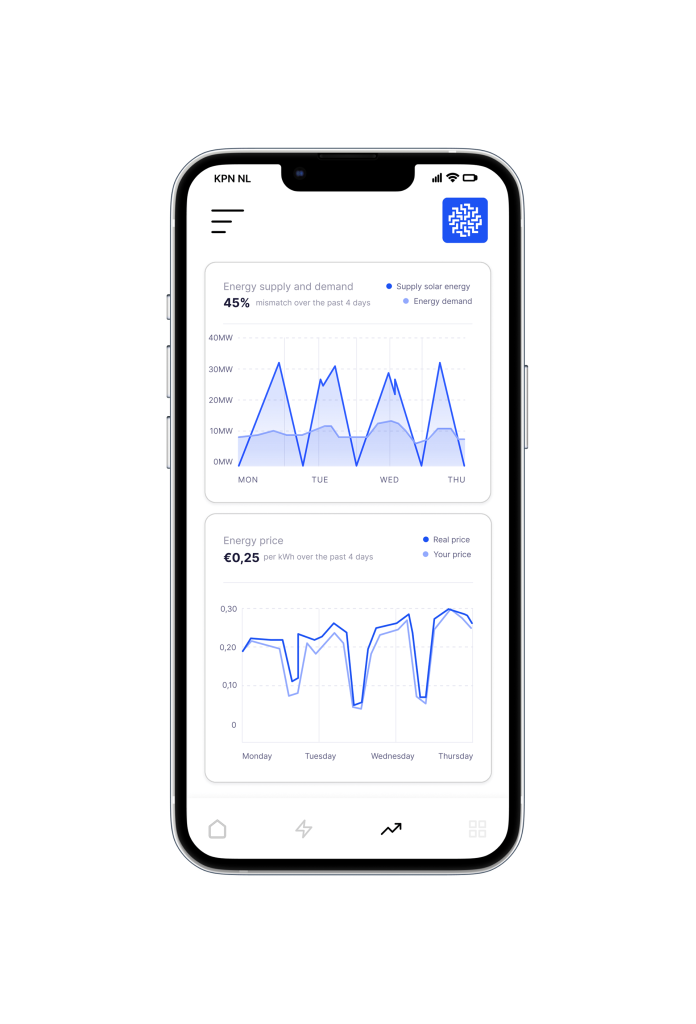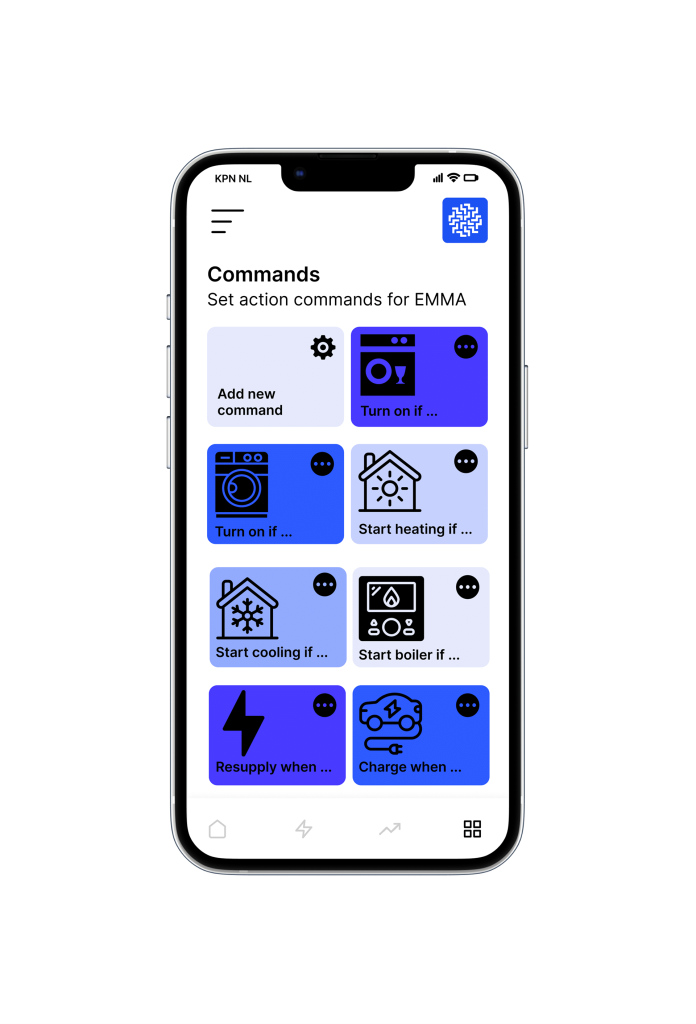EMMA
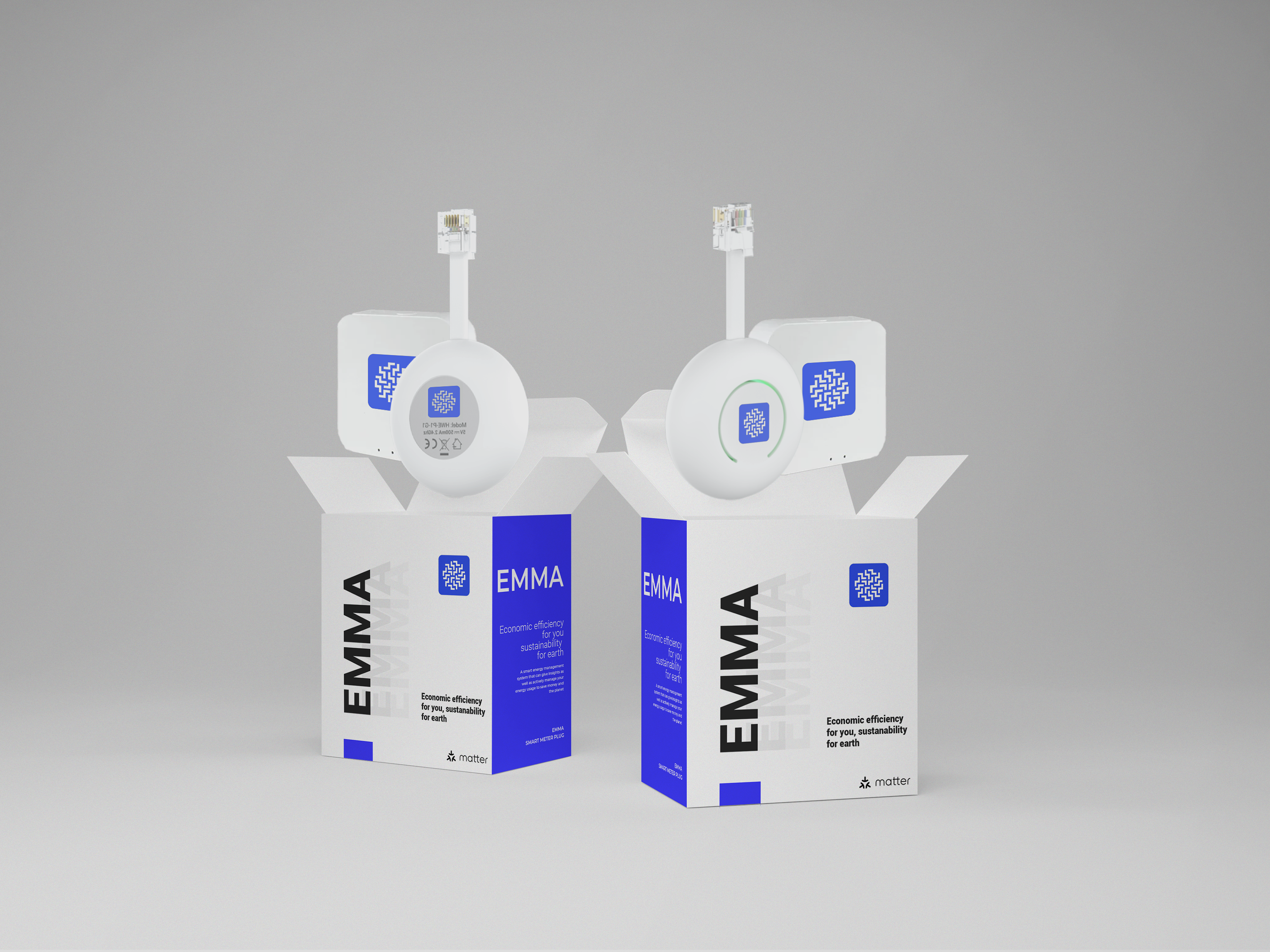
Service
Business Innovation
Year
2022/2023
Expertise Area
Business & entrepreneurship
Design
Renewable energy sources, like solar panels, are getting increasingly popular among homeowners. However, a key problem of renewable energy sources that reduces their effectiveness much, is called the intermittency problem. This problem concerns the discrepancy between the supply of energy created by these technologies and the energy demand. Currently, many of these technologies produce electricity during times of the day when many people are not at home and are thus not using the energy produced. This energy is then wasted or, in the case of electricity, supplied to the grid which can lead to grid overload during these peak hours. At the moment households in the Netherlands still get some money for the electricity delivered to the electricity grid, but this will soon change according to the Dutch government. So, this mismatch problem causes households to use their renewable energy less efficiently and profit less from their investment. Furthermore, it increases the chance of grid overload which decreases the reliability of the electricity grid and causes more work for grid operators. The problem of electricity mismatch is mostly present in the group that owns renewable energy sources. But the problem also occurs, although in less severe form, for households that have dynamic energy pricing (varying electricity prices during the day), since it is financially better for them to use energy when it is cheap. In this case, you could say that the energy supply is higher when the prices are lower. Lastly, the increased possibility of grid overload is a problem for grid operators, but also for everyone connected and using the electricity grid.
This solution addresses the issue of intermittency in renewable energy sources that result in a mismatch between energy supply and demand. This discrepancy leads to energy wastage, reduced efficiency, and grid overload. The system focuses on matching energy supply and demand by turning on smart devices in households at the best moment during the day. This approach aims to save money for homeowners, reduce grid overload, and optimize energy usage.
The system is designed to be compatible with various brands of smart devices and smart systems. The hardware present in the system processes data from different energy sources like solar panels, heat pumps, and the grid. It controls the smart devices via the smart system they are connected to or directly to the smart device if no smart system is present. This is done via an energy management system that can automatically, based on external and internal data, decide what is the best time to turn on appliances or heating/cooling systems. The system is designed to work with existing appliances and smart devices, thereby offering an efficient and cost-effective way to manage energy supply and demand.
It is important to note that the number of smart devices in homes is expected to increase significantly in the coming years, making our system increasingly relevant and crucial for households. The EMMA system differs from other energy management systems as it acts rather than informs. For example, it turns on appliances during an energy surplus instead of merely providing information about how much energy the appliance uses. The system also includes forecasts for later energy usage to ensure optimal energy utilization. By utilizing our system, households can manage their energy supply and demand more efficiently, leading to cost savings, reduced grid overload, and optimized energy usage.

